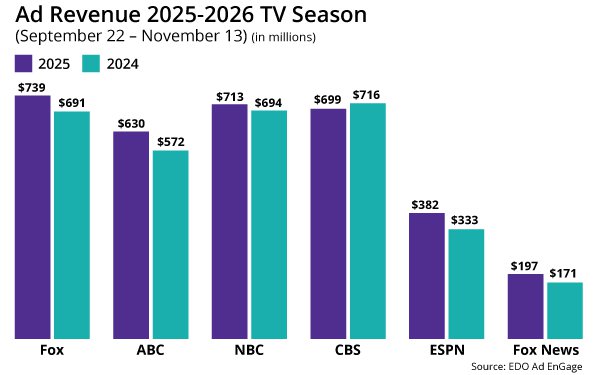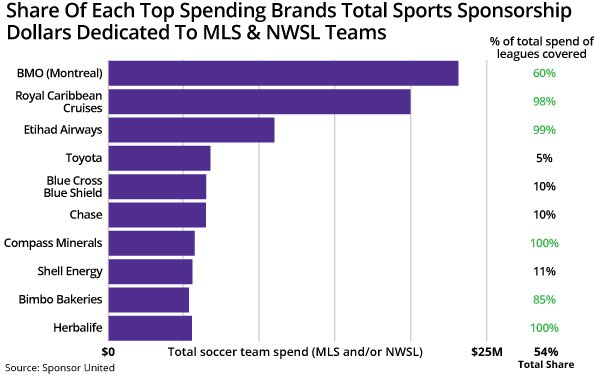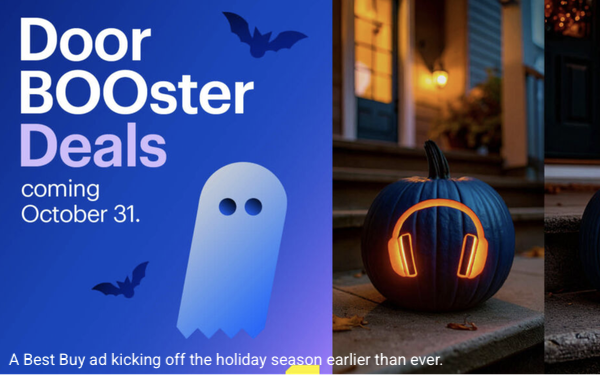Here's a nice new juicy report I pulled for you all and it's a big one indeed...So saddle up another enjoy another first from LeNoble's Media Sales Insights. Philip Jay LeNoble, Ph.D.
Station
Execs Bullish on Prospects for 2026 Ad Market, Deregulation
By George Winslow published November
7, 2025
Major groups saw better-than-expected revenue in Q3 from
core advertising results that exclude political ads
When you purchase through links on our site, we may earn an
affiliate commission. Here’s
how it works.

"We think broadcast is going from strength to strength
at this moment,” Perry Sook, Nexstar Media Group’s founder, chairman and CEO,
said on its Q3 earnings call. (Image credit: Nexstar)
While most station groups reported major declines in ad
revenue in the third quarter, thanks to a steep decline in political
advertising compared to a year ago, this week’s earnings calls with
analysts were generally bullish. Most station groups beat expectations,
reporting better-than-expected year-over-year results for core advertising
sales that exclude political and the Olympics.
A close review of those earnings calls also provides a
snapshot of the state of the industry in the latter half of 2025 and its
prospects for 2026.
Station executives offered bullish comments about next year,
thanks to the prospects of heavy political advertising and the
likelihood regulators will relax ownership rules and allow a wave of
dealmaking.
You may like
For the moment, though, all the station results were heavily
impacted by the absence of political revenue in Q3 2025 compared to the record
spending during the 2024 presidential campaign.
“Advertising revenue of $476 million decreased $146 million
or 23.5% over the comparable prior year quarter, primarily reflecting a $145
million year-over-year decrease in political advertising,” Nexstar Media Group
President and Chief Operating Officer Michael Biard noted. “However,
nonpolitical advertising was essentially flat and better than our expectation
of a low single-digit decline.”
Sinclair also reported year-over-year declines in total
revenue, thanks to the absence of significant ad income in Q3, but reported
revenue that was generally better than expected. “We delivered strong
performance and met or exceeded guidance across all key metrics,” Sinclair
President and CEO Chris Ripley said on the company’s Q3 earnings call. “Total
revenue of $773 million came in higher than the high end of our guidance range.
Core revenues were up 7% year-over-year on an as-reported basis.”
Likewise, Gray Media generally beat analysts’ expectations
and while overall revenue was down 21% YoY, Q3 2025 revenue was above analyst
expectations.
Get the TV Tech Newsletter
The professional video industry's #1 source for news, trends
and product and tech information. Sign up below.
Top of Form
Contact me with news and offers from other Future
brandsReceive email from us on behalf of our trusted partners or sponsors
Bottom of Form
By submitting your information you agree to the Terms &
Conditions and Privacy Policy and are aged 16 or over.
Hilton Howell Jr., Gray Media’s chairman and CEO, said: “Our
results for the third quarter of 2025 compared favorably to our Q3 guidance for
both revenues and expenses. Total revenue in the third quarter of 2025 was $749
million, at the high end of our guidance for the quarter.”

Pat LaPlatney (Image credit: Gray Media)
Pat LaPlatney, president and co-CEO at Gray Media added: “Q3
continued the theme we’ve been describing throughout 2025, with advertisers
remaining somewhat cautious due to the macro environment. Through the quarter,
though, we saw core activity strengthen more than we had projected back in
August, and we ultimately finished on the high side of guidance. Remember that
the Olympics on NBC provided about a $20 million uplift in July and August of
2024, of which about $16 million was core ad revenue and $4 million was
political. Factoring that in, our third quarter was up about 1% over 2024.”
E.W. Scripps reported that third-quarter company revenue was
$526 million, down 19% or $120 million from the prior-year quarter, mainly due
to political advertising. But its Local Media division reported that core
advertising (excluding political) was up, due to the services category and
”overall growth in national advertising due to strong sales efforts and
Scripps’ sports strategy.”
You may like
“During the quarter, our Local Media division revenue was
down 27% due to the absence of political advertising revenue compared to the
prior year,” Chief Financial Officer Jason Combs said. “Core advertising
revenue was up nearly 2%. We grew national advertising revenue, driven by an
increase in our largest category, services. Our sports strategy helped drive
that Q3 performance as well. Local Media distribution revenue was flat."
‘We’re Very, Very Optimistic About 2026’
While broadcasters haven’t released detailed guidance for their 2026 revenue
expectations, executives offered generally bullish comments for the year ahead
in terms of the impact of political advertising and the prospects for
deregulation.
“I would say that we’re really optimistic about 2026,” said
Gray Media’s LaPlatney. “We have some early Q1 numbers that are encouraging, in
fact, very encouraging…As we sit here today, we’re very, very optimistic about
2026.
“We think broadcast is going from strength to strength at
this moment,” explained Perry Sook, founder, chairman and CEO of Nexstar. “In
the near term, we see a decreasing interest rate environment, the reset of the
majority of our distribution contracts at the end of this year, the acquisition
of TEGNA and an election year in 2026, all of which we expect to drive
shareholder value. Longer term, we expect to accelerate our CW and NewsNation
network growth strategies, our deployment of applications for ATSC 3.0 and
innovation around how we go to market and the products and services we bring to
benefit our viewers and our advertisers.”
As expected, M&A
activity was a major topic of discussion.

Chris Ripley (Image credit: Sinclair)
‘We're Operating in the Wild Wild West’
Sinclair’s Ripley noted that “the broadcast sector is facing secular challenges
within linear TV while having a unique opportunity for significant
consolidation. We believe the industry is at an inflection point where scale
and operational efficiency will increasingly separate high-performing companies
from the rest. … Against this backdrop, in mid-August, we
launched a strategic review of our broadcast business and an
evaluation of a potential separation of ventures to optimize value creation
across our portfolio,” that has already led to “several transactions, including
partner station acquisitions and select acquisitions and divestitures.”
“One potential path for industry evolution could involve
consolidating into two similarly sized scale broadcast groups," Ripley
continued. "[C]reating another group comparable in size to the large
broadcast combination announced in August [i.e., the
proposed Nexstar-Tegna combination], could unlock an estimated $600 million
to $900 million in annual synergies through mergers and subsequent portfolio
optimizations. This level of consolidation would strengthen the industry's
financial footing and position broadcasters as more capable competitors to big
media and big tech.
“While we present this as one potential industry scenario
rather than a prediction, the fundamental point is clear,” Ripley added. “The
regulatory environment now enables transformational consolidation that can
benefit Broadcast Group shareholders, creditors, employees and the communities
we serve. Sinclair is well-positioned in this environment, and we're actively
evaluating how best to participate to maximize value for our stakeholders.”

Adam Symson (Image credit: E.W. Scripps)
Scripps’ discussion of M&A opportunities was more
modest. “As I've said from the start, we are totally focused on optimizing our
portfolio of stations to structurally enhance performance and economic
durability in service to our vision to create connection,” Scripps President
and CEO Adam Symson sais. “We've already announced a
station-swap deal with Gray where we are exchanging two Scripps
stations for five Gray stations, a transaction that improves our market
positioning and creates immediate efficiency opportunities. We also
announced station
sales in Fort Myers, Fla., and Indianapolis for
cash. The sale prices represent premium multiples for the industry. These are
quality stations we agreed to sell only at strong valuations, and the cash we
receive will go directly to delevering.”
Deregulation Continues
In the Q3 earnings call, Nexstar’s Sook reiterated his previously expressed
belief that the industry should see significant deregulation of broadcast
ownership rules.
“The 8th
Circuit mandate was issued on Oct. 21,” he said, refrencing the 8th
U.S. Circuit Court of Appeals’ decision to vacate the Federal Communications
Commission’s rule barring a station group from owning more than one of the
top-four stations in audience share in a given market. “That eliminates the
top-four ownership rule, that will go into effect as soon as that order is
published in the Federal Register and it's effective 30 days later. … And we,
again, continue to believe that this administration, the Trump administration and
Brendan Carr at the FCC are focused on deregulating business, allowing
businesses to breathe, allowing businesses to compete and that we’ve been
spending a lot of time in Washington to reinforce at the regulatory agencies
and on the hill that we are indeed here to help meet the regulatory
moment."
While Gray Media has already announced a number of potential
acquisitions and station swaps, including an agreement to acquire
stations from Allen Media Group, Howell also expressed a note of caution
during the analyst call. Reacting to a report of a possible merger or deal with Sinclair, he said, “there
is nothing that we are in deep negotiation with at the moment.”
“We are in a period of time in our industry where things
change faster than I have ever, ever seen it,” Howell added. “For the first
time in the history of our business, we are really operating in the Wild, Wild
West. No one knows what the rules actually are. Anybody that tells you
that…they just do not. They cannot.
“I don’t want to…do any deal that would put the basic
company in any kind of risk,“ he continued. “Now, there’s a lot of big
opportunities to grow. Unlike perhaps some of our competitors, I don’t believe,
and my management team unanimously does not believe, that Gray actually has to
do anything. I mean, we’re just fine where we are, and we can carry on our
previously announced efforts to just reduce our debt and pay it down and then
return more to our shareholders.



















